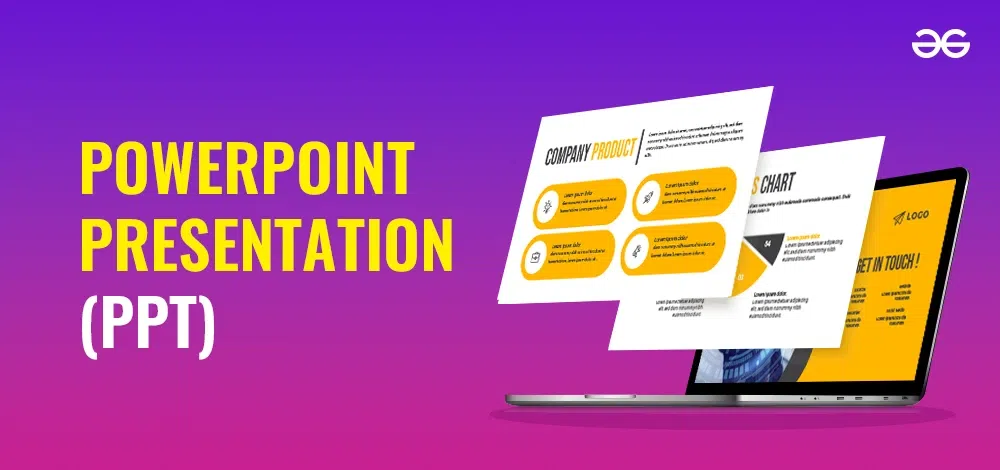Research Presentation#1
Research Presentation Help: Expert Tips for Creating a Compelling Academic Presentation
Presenting research findings effectively is an essential skill for students, professionals, and academics alike. Whether you’re preparing for a classroom presentation, a conference, or a formal defense, delivering a well-structured, informative, and visually appealing presentation is crucial for communicating your ideas and engaging your audience. Research Presentation Help services and resources can provide valuable support to ensure your presentation meets high academic standards and leaves a lasting impression.
This article explores the benefits of research presentation help, provides tips for crafting a successful presentation, and offers guidance on selecting the right support for your needs.
Why Research Presentation Help Is Important
Creating a research presentation is challenging. It requires not only an understanding of the topic but also the ability to structure and visually organize information in a way that is accessible and engaging. Here are some reasons why many students and professionals seek research presentation help:
1. Time Constraints
With tight deadlines and competing priorities, it can be difficult to find the time needed to design an effective presentation. Professional help can streamline the process, ensuring high-quality results in less time.
2. Design Expertise
Effective presentations require knowledge of visual design elements such as layout, color schemes, and typography. Research presentation help services bring this expertise, resulting in slides that look polished and professional.
3. Clarity and Flow
A successful presentation is well-structured and flows logically from one point to the next. Many people struggle with organizing complex information clearly; research presentation experts can help structure the content for maximum impact.
4. Confidence in Delivery
Knowing that your slides are well-designed and easy to understand boosts confidence, helping you focus on engaging your audience and explaining your research in a way that resonates with them.
Benefits of Research Presentation Help Services
Research presentation help offers a variety of benefits, including access to professional design tools, expert feedback on your content, and valuable tips for delivering your presentation effectively. Here’s what you can expect from quality research presentation support:
1. Custom Slide Design
Professional services create custom-designed slides tailored to your research topic and audience. These slides are visually engaging and follow design best practices to make your content stand out.
2. Content Structuring and Editing
Effective content structuring ensures that your presentation flows logically. Research presentation experts can help you organize information, select key points, and develop clear, concise language for each slide.
3. High-Quality Visuals and Data Representation
Data is often a central component of research presentations. Professional help can transform complex data into clear visuals like charts, graphs, and infographics, enhancing audience understanding.
4. Proofreading and Polishing
A polished presentation is free from grammatical errors, typos, and formatting inconsistencies. Presentation help services often include proofreading and editing to ensure your slides are polished and professional.
5. Guidance on Delivery Techniques
Many research presentation services also offer tips on delivering your presentation. They may provide speaker notes, advice on pacing, and techniques for handling audience questions with confidence.
Essential Tips for Crafting an Effective Research Presentation
Whether you choose to work with a professional or create your presentation on your own, there are several best practices to follow. Here are some key tips for creating an effective research presentation:
1. Focus on Key Points
Avoid overloading your slides with information. Instead, focus on the main points you want your audience to remember. Use short phrases and bullet points to make your content easy to scan, and expand on these points verbally.
2. Use Visuals to Enhance Understanding
Visual aids such as graphs, charts, and images can help make complex information more accessible. Choose visuals that enhance understanding and avoid cluttered or overly complicated images.
3. Maintain Consistent Design
Consistency in font style, color scheme, and layout helps create a cohesive look. Stick to one or two fonts and limit your color palette to avoid distracting the audience.
4. Create a Clear Structure
Organize your presentation in a logical flow. Start with an introduction that outlines the purpose of your research, followed by your main findings, and conclude with your results and implications.
5. Limit the Text on Each Slide
Too much text can overwhelm the audience. Aim for concise phrases and avoid full sentences on slides. This approach helps the audience focus on your words instead of reading from the screen.
6. Practice Your Delivery
Rehearsing your presentation ensures you’re comfortable with the flow, timing, and transitions. Practicing aloud helps you refine your delivery and gain confidence.
Common Pitfalls to Avoid in Research Presentations
Knowing what to avoid is just as important as knowing what to include. Here are some common mistakes to watch out for when creating a research presentation:
- Overloading Slides with Information: Avoid putting too much information on each slide. Crowded slides can overwhelm the audience and detract from your message.
- Using Too Many Fonts and Colors: Too many fonts and colors create a cluttered, distracting design. Stick to one or two fonts and a limited color scheme for a cohesive look.
- Poor-Quality Images: Low-resolution images appear unprofessional. Use high-quality visuals to enhance your presentation’s appearance.
- Neglecting to Practice: Not practicing can lead to awkward transitions, timing issues, and a lack of confidence. Take time to rehearse so you can deliver your presentation smoothly.
- Ignoring Audience Engagement: Engaging your audience is crucial for a successful presentation. Make eye contact, ask questions, and encourage interaction to keep your audience involved.
Choosing the Right Research Presentation Help Service
If you’re considering professional research presentation help, it’s essential to select a service that aligns with your needs and standards. Here are some factors to consider:
1. Expertise in Academic Presentations
Look for a service with experience in academic presentations. Check their portfolio or customer reviews to ensure they understand the unique needs of research-based presentations.
2. Customization and Personalization
Your presentation should reflect your research and personal style. Choose a service that offers customization, so your slides are tailored to your specific topic and academic requirements.
3. Transparent Pricing
Check that the service’s pricing is transparent, with no hidden fees. Compare rates among several providers to find a service that fits your budget.
4. Customer Support and Communication
A good research presentation service provides strong customer support and communicates effectively. Choose a service that is responsive to your questions and open to feedback.
5. Confidentiality and Academic Integrity
Ensure the service guarantees confidentiality and adheres to academic standards. A reputable provider should protect your research data and never use your presentation without permission.
Helpful Tools for Creating Your Own Research Presentation
Several tools can help you design and deliver an effective research presentation:
- PowerPoint: A widely-used presentation tool, PowerPoint offers templates, design tools, and the option to add animations and transitions.
- Google Slides: This free, collaborative tool allows you to create slides in real-time with team members, making it ideal for group projects.
- Canva: Canva provides professionally designed templates, making it easy to create attractive slides even without design experience.
- Prezi: For a more dynamic presentation style, Prezi allows you to create non-linear, zooming presentations that can be visually engaging.
- LaTeX Beamer: For academic and scientific presentations, LaTeX Beamer is a tool that provides advanced design options for research-based presentations.
Tips for Delivering an Engaging Research Presentation
Delivery is just as important as slide design. Here are some tips to make your research presentation engaging:
- Make Eye Contact: Engage your audience by making eye contact. It shows confidence and helps build rapport.
- Use Body Language: Positive body language, such as open gestures and a relaxed posture, makes you appear confident and approachable.
- Pace Your Speech: Speak at a steady pace, pausing occasionally to let information sink in. Avoid rushing through complex points.
- Encourage Questions: Invite questions at the end of your presentation to clarify any doubts and engage with your audience.
- Stay Calm and Composed: Presenting research can be nerve-wracking, but taking deep breaths and staying calm helps you deliver your message more effectively.
Research Presentation Help as a Pathway to Success
Research presentations are a valuable opportunity to showcase your work, communicate key findings, and engage with an academic audience. However, creating an impactful presentation can be challenging. Seeking research presentation help ensures that your slides are professionally designed, your content is clearly structured, and you have guidance on delivering your presentation effectively.
By following the tips outlined in this article, and by considering professional help when needed, you can elevate your presentation to a new level. Remember, effective presentations not only reflect your research but also your ability to communicate ideas—making them a skill worth mastering in academic and professional settings alike.
By investing in the quality and delivery of your research presentation, you’re building skills that will serve you well beyond this one project. A successful presentation reflects not only your grasp of the topic but also your ability to communicate it to others—a vital skill in any academic or professional field. Here’s a final recap of the steps to take and resources to consider:
- Start with a Plan: Outline your main points and structure your content logically. Focus on clarity and flow, ensuring that each slide transitions naturally to the next.
- Design with Purpose: Use visuals strategically, maintain a consistent style, and avoid overloading slides with text. Tools like PowerPoint, Canva, and Google Slides can offer pre-made templates and customization options that make it easy to create a polished presentation.
- Practice Delivery: Rehearse your presentation several times, focusing on your timing, speaking pace, and body language. Engage with your audience through eye contact and open gestures, and be prepared to handle questions with confidence.
- Seek Professional Help if Needed: If you’re under time constraints, or if design isn’t your strength, research presentation help services can make a significant difference. From slide design to content structuring and proofreading, these services can enhance the quality of your presentation and give you peace of mind.
- Stay Calm and Confident: Approach your presentation with confidence. Knowing that you’re prepared and well-rehearsed will help you deliver your research effectively, leaving a lasting impression on your audience.
With a well-organized approach, thoughtful design, and polished delivery, your research presentation will be a powerful tool for sharing knowledge and sparking interest in your topic. Taking advantage of available resources, including professional help if needed, can make the process smoother and more rewarding.
Whether you’re presenting in a classroom, at a conference, or defending your thesis, remember that every presentation is an opportunity to showcase your hard work and expertise. Use these guidelines to create a compelling, effective presentation that engages your audience and leaves a lasting impact.
By embracing these strategies, you can transform the often daunting task of a research presentation into a rewarding experience that highlights your hard work and dedication to your field. Each presentation builds your skills in communication, design, and public speaking, which are invaluable assets for both academic and professional growth.
Final Thoughts: Elevating Your Research Presentation Skills
In today’s competitive academic and professional environments, effective communication is essential. A well-prepared and thoughtfully designed presentation does more than convey information—it reinforces your credibility, clarifies complex ideas, and engages your audience on a deeper level. The ability to present research effectively allows you to connect with your audience and inspire curiosity about your findings.
Taking the time to polish your research presentation or seeking expert help can elevate its quality, making a strong impact. Whether it’s the design aesthetics, clarity of content, or delivery techniques, every detail contributes to your success as a presenter.
Resources for Ongoing Improvement
To continually improve your research presentation skills, consider exploring these additional resources:
- Online Courses: Platforms like Coursera, LinkedIn Learning, and edX offer courses on public speaking, data visualization, and presentation design that can enhance your skills over time.
- Public Speaking Groups: Organizations like Toastmasters International provide a supportive environment to practice and refine your presentation skills, building confidence and refining delivery.
- Design Tutorials: For those looking to improve design skills, YouTube and design websites like Canva and Adobe offer tutorials on using presentation tools effectively and creatively.
- Feedback and Iteration: Practice your presentation in front of friends, mentors, or colleagues to receive constructive feedback. Adjusting based on this input is invaluable for improvement.
Remember, every presentation is an opportunity to learn and grow. With the right preparation, a well-designed slide deck, and effective delivery, you’re equipped to share your research confidently and make a memorable impact on your audience. Embrace each presentation as a stepping stone in your journey to becoming a skilled communicator, empowering you to convey your ideas clearly and inspire others with your work.







